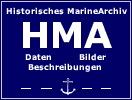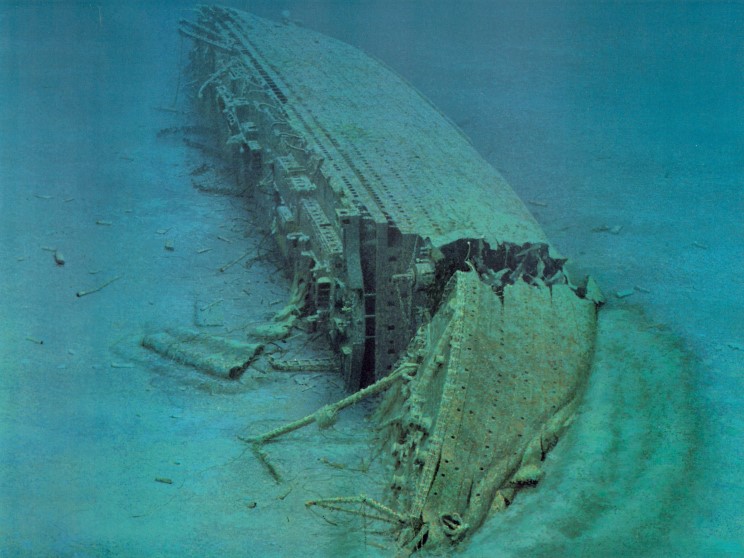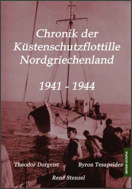The S/S Burdigala “reef”
by Maria Salomidi

Detail from the bridge area of the shipwreck S/S Burdigala, ex. S/S Kaiser Friedrich. During the almost 100 years of sea bottom time, the wreck has been covered and continues to do so year after year, by new coatings of coralline algae, sponges, bryozoans, tube worms, sea-squirts, and corals compose unique palimpsests of life on each and every exposed surface. (KFB Collection).
The importance of shipwrecks as valuable sources of historical information is well known and rather indisputable. Based on this very principle, shipwrecks sunken for more than 50 years, are regarded in our country as cultural heritage monuments and are protected by law. Little merit, however, has been afforded by the Greek State on their parallel function as arks of life and biodiversity. Be that as it may, any diver who had the opportunity to dive an old shipwreck is well aware that despite the sadness that a lost ship causes to humans, under the sea this is only a start for a new, daresay exciting, life cycle.
With pace and procedures depending on numerous factors (vessel size and shape, arrangement and orientation on the sea bottom, structural materials and coatings, time and place of sinking, etc.), a shipwreck gradually assimilates in the seascape, deservedly claiming a leading role in the new benthic order. It is precisely this dynamic of shipwrecks for evolutionary transformation over time into colorful oases of life that has inspired scientists to the idea about creating artificial reefs to restore or enrich degraded marine areas around the world. Similarly, deliberate sinking of decommissioned and meticulously cleansed vessels has emerged as a prosperous way to attract diving tourism, even in coastal areas with sandy or otherwise monotonous sea bottoms.
For life underwater, the degree of exposure to incident solar radiation is one of the most important factors that determine the distribution of sessile marine organisms. On a shipwreck, places for all tastes can be found: photophilic (light loving) species will progressively colonize the upper and better illuminated sections, while strictly sciaphilic (shade loving) species will occupy the deeper parts of bulkheads and internal chambers, marking thus the first clearly discriminable territories.
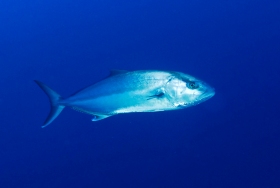
A large sized Seriola dumerili swims curiously among the visiting divers during their deco stops. It is just one example of the rich marine ecosystem established on the S/S Burdigala shipwreck, which seems to have become the focus of concentration of the entire Mediterranean aquatic biodiversity. (KFB Collection).
Depending on depth and other specific characteristics of the site, a big shipwreck often assumes the role of the regulating factor for the hydrological regime of the area. Acting like a barrier upon prevailing currents, the bulk of the wreck soon resolves in numerous distinct micro-environments, adding up to the diversity of habitats. Sections of the wreck in the current upstream increase the flow intensity, providing thus ideal conditions for the successful colonization of various rheophilic species. Similarly, downstream sections create sheltered habitats, suitable for the development of organisms seeking more peaceful hydrodynamic conditions.
The sunken ship’s interiors transform into wonderful refuge areas for large territorial fish (groupers, moray eels, forkbeards, congers, etc.) but also precious stopover sites for many pelagic species (e.g. tunas, dolphinfish, amberjacks and various types of elasmobranchs). Any recess or hollow object is quickly occupied by various invertebrates seeking the safety of a den (octopuses, lobsters, shrimps), while year after year, new coatings of coralline algae, sponges, bryozoans, tube worms, sea-squirts, and corals compose unique palimpsests of life on each and every exposed surface.
Considering the above, one easily comprehends the great ecological importance of the S/S Burdigala shipwreck. With a length of 183 meters and 12,300 tons displacement, immersed for nearly a century in 70 meters depth, this newly emerged “Burdigala-reef” seems to have become the core of existence for an astonishing portion of Mediterranean marine life. The ship’s upright position on the sea bottom and the split of her hull in two parts, significantly increase the surface area available for the settlement of sessile organisms. Exposed to the area’s strong bottom currents carrying essential nutrients and bountiful larvae of benthic animals, the S/S Burdigala seems to concentrate all those favorable characteristics of shipwrecks, which the Sea wonderfully knows how to take advantage of.
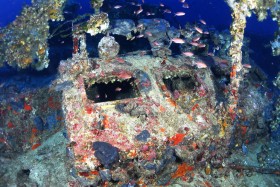
A skylight from the main superstructure area. Various species of aquatic life have covered each metal surface of the shipwreck, transforming her to a healthy and rich reef. (KFB Collection).
Although historic research was the Kea Dive Expedition 2008 primary purpose, the photographic and video documentation the team brought to the surface, does not leave the slightest doubt about the biological importance of this shipwreck. Dense and colorful fish schools of reef-dwelling swallowtail seaperch (Anthias anthias) and damselfish (Chromis chromis), along with several sizeable white seabreams (Diplodus sargus), (Diplodus vulgaris) and combers (Serranus cabrilla) wander about recklessly despite human presence, triggering memories of past seas. Proud amberjacks (Seriola dumerili) fearlessly examine the visiting divers, completely oblivious that within few miles to the southeast they are regarded as one of the finest game fish.
Almost all known -and probably some yet unknown- sponge species have coated not only the ship’s surfaces, but also ghost nets and long-lines that once ventured here, unsuccessfully. Extensive delicate and extremely fragile species, such as colonial tube worms (Filograna sp.) and Neptune´s laces (Sertella septetrionalis), testify to the long absence of anthropogenic disturbances. Finally, scattered slow-growing cup corals (cf. Caryophyllia smithii), complete a picture of rare and unique beauty which is in absolute, absurd, almost hilarious contrast to what once had been the purpose of the armed troop transport named S/S Burdigala.
“There’s much more life on her now than ever was when she was on service”. Simon Mills’ words referring to the neighbor shipwreck of the HMS Britannic, could equally have been said about the S/S Burdigala, the S/S Patris, the S/S Artemis Pitta, the S/S Monrosa and so on. The aging shipwrecks of the Greek seas are full of treasures, which, unfortunately, very few of us are even conscious of: treasures of life, which will be readily transformed into “useless coals” right after any “grandiose” lifting operation –without a cause, without a purpose.
It is about time that we begin to realize that some things are no longer our own. It is time that we begin to visualize the true value of the mere existence of all these underwater oases. And it is certainly about time we begin to join our efforts towards the most effective promotion and protection of historic shipwrecks in the Greek Seas: in situ.
The KDE team has done a commendable beginning, bringing a respectful and enthusiastic human glance back to the so long forgotten S/S Burdigala. Let us hope that whatever future plans of action are decided by the State, a simple but fundamental fact will be taken into account:
At the depths out of Kea island, right where in 1916 an ocean liner sunk, in 2008 a vivid and amazing reef was discovered.
Copyright © 2009 by Maria Salomidi and the S/S Burdigala Project Team



